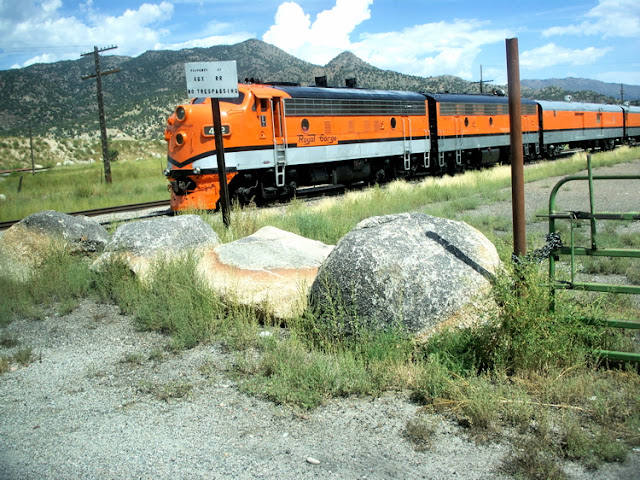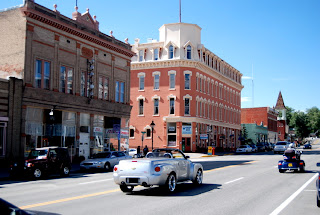
It was in 1879 that the first passenger train rode this route, a route long engulfed in a turf war between the Santa Fe and the Denver and Rio Grande Railroads. Here is the 1950s era F7 locomotive picking up 40 rafters from various raft companies at the western end of the route.

Although seats are available inside a passenger car, we spent the entire 2 hour ride in this outdoor car, enjoying the scenery and beautiful summer day. As we entered the gorge a bit later, this car quickly filled up.

Here is a shot of the interior of a typical passenger car. For an upgrade cost, you could also ride in the domed observation car.

Raft trips are also available through the canyon, and involve negotiating numerous rapids rated at 4 and 5 on a scale of 5. Participants all wear helmets as well as personal flotation devices. The photo below shows several rafts alongside the train. It is said that over 200,000 people raft this area each year.

The famous Royale Gorge suspension bridge, built in 1929 and the highest in the world, is a highlight of the trip. I recall decades ago walking across it and noticing in the middle a sign indicating it was 1000-plus feet to the river below. Next to that sign was another that simply said: No Fishing from Bridge!

Immediately below the bridge, the train tracks are also built on a "hanging bridge." Since the canyon walls at river level are a mere 30 feet apart at this point, a metal plate about 300 feet long, suspended from the canyon walls on each side by massive steel beams, supports the tracks. Hence the trains travel across a bridge as they pass under the Royal Gorge bridge 100 stories above.













































